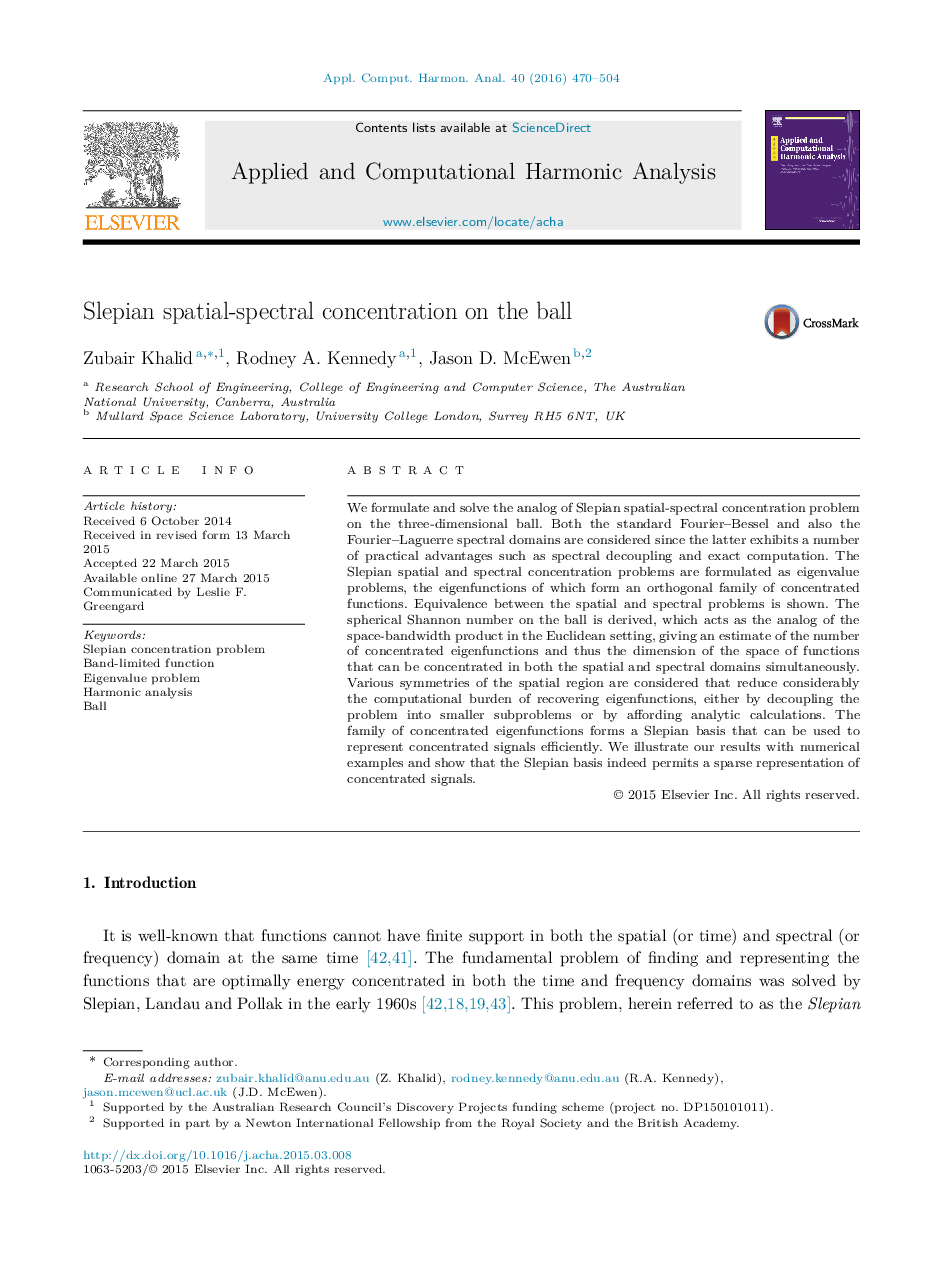| Article ID | Journal | Published Year | Pages | File Type |
|---|---|---|---|---|
| 4604934 | Applied and Computational Harmonic Analysis | 2016 | 35 Pages |
We formulate and solve the analog of Slepian spatial-spectral concentration problem on the three-dimensional ball. Both the standard Fourier–Bessel and also the Fourier–Laguerre spectral domains are considered since the latter exhibits a number of practical advantages such as spectral decoupling and exact computation. The Slepian spatial and spectral concentration problems are formulated as eigenvalue problems, the eigenfunctions of which form an orthogonal family of concentrated functions. Equivalence between the spatial and spectral problems is shown. The spherical Shannon number on the ball is derived, which acts as the analog of the space-bandwidth product in the Euclidean setting, giving an estimate of the number of concentrated eigenfunctions and thus the dimension of the space of functions that can be concentrated in both the spatial and spectral domains simultaneously. Various symmetries of the spatial region are considered that reduce considerably the computational burden of recovering eigenfunctions, either by decoupling the problem into smaller subproblems or by affording analytic calculations. The family of concentrated eigenfunctions forms a Slepian basis that can be used to represent concentrated signals efficiently. We illustrate our results with numerical examples and show that the Slepian basis indeed permits a sparse representation of concentrated signals.
